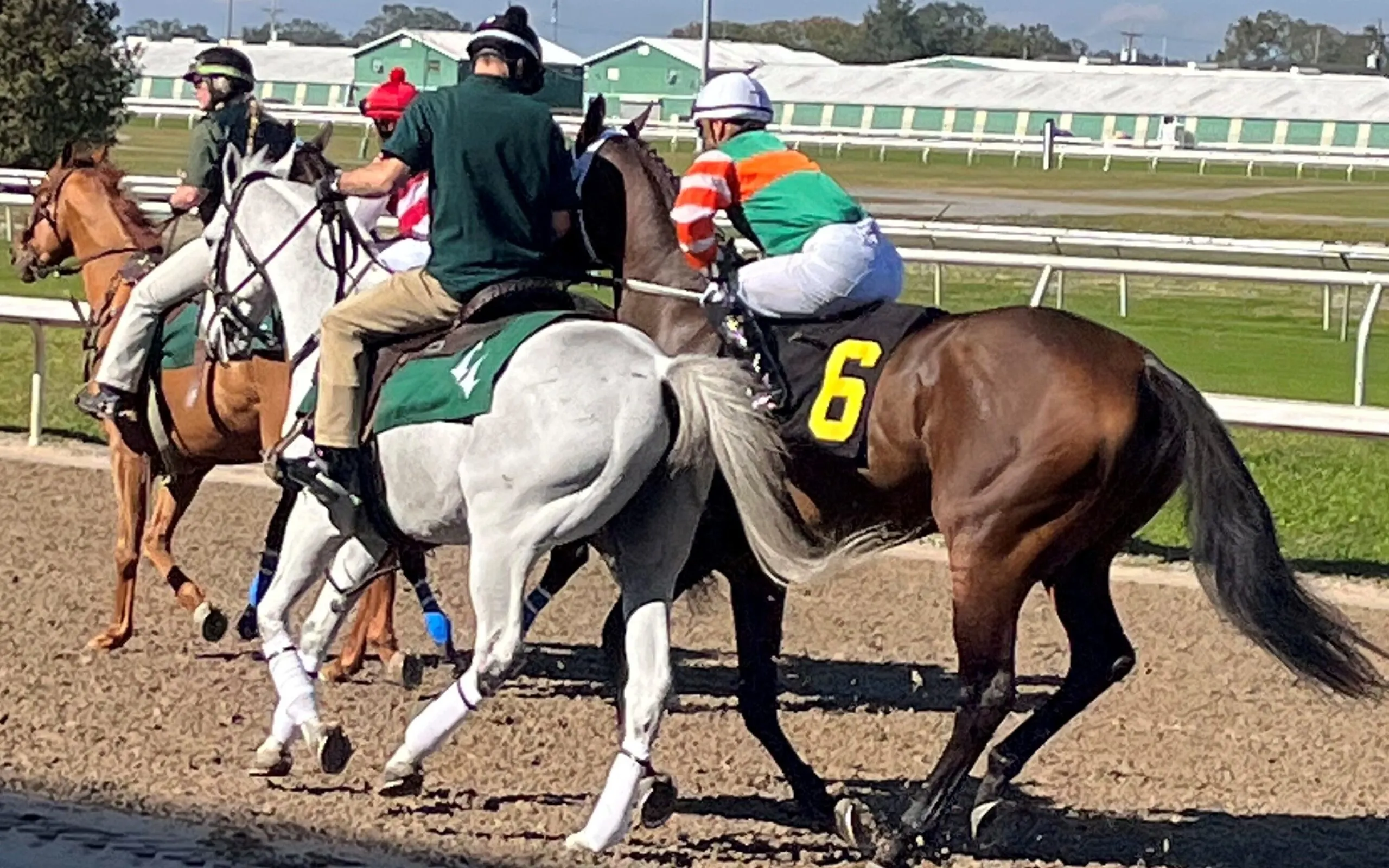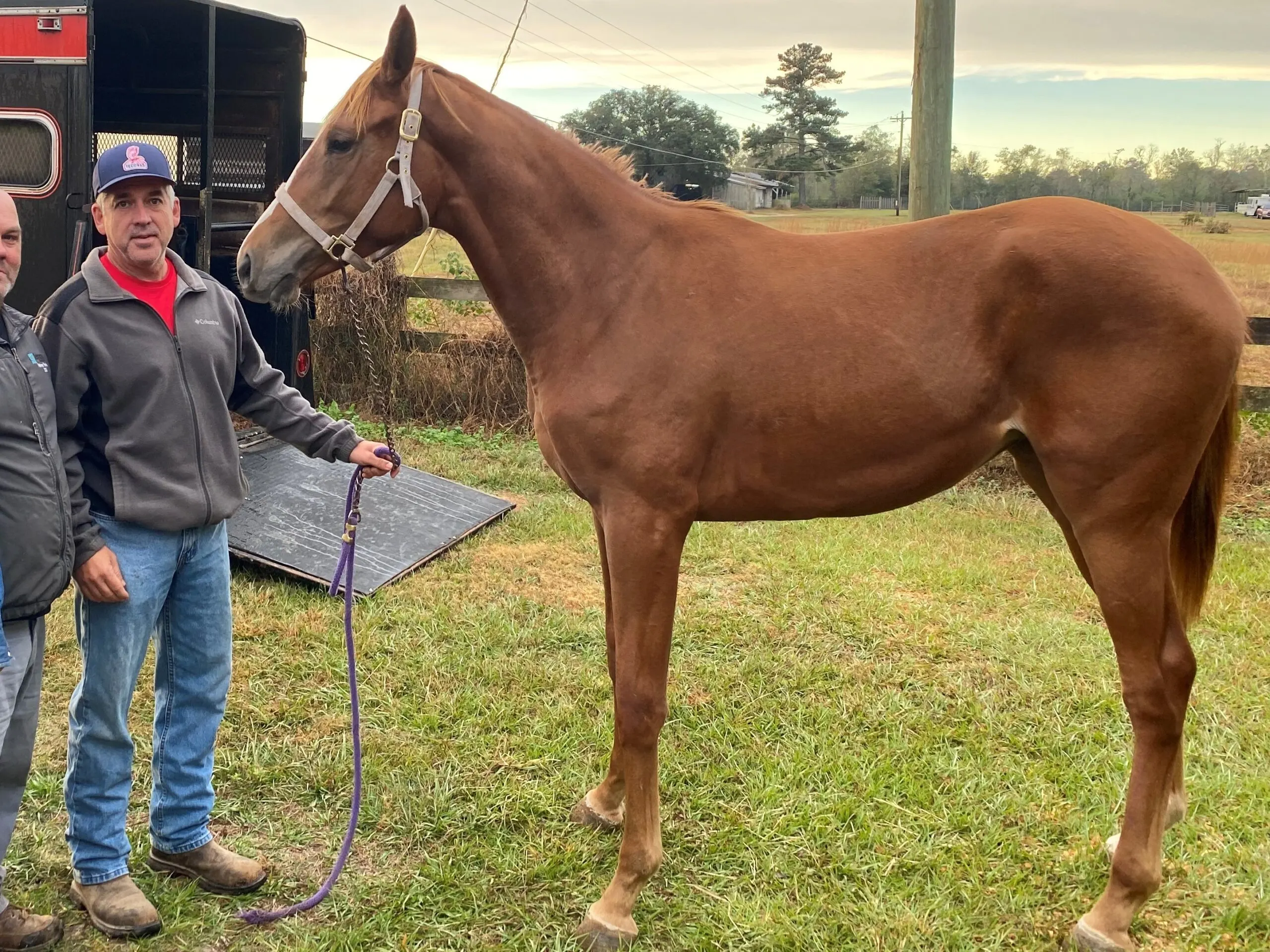Last updated: March 1, 2024
Did you know that the vibrant attire worn by jockeys, known as silks, is not just for show? These colorful garments hold a rich history and serve crucial purposes in the world of horse racing. As a long-time racehorse owner, I’ve witnessed firsthand the evolution and significance of these silks.
In this article, I examine the origins, purposes, and impact of jockey silks on the sport, offering insights from decades of experience within the racing community. Join me in exploring the tradition and technology behind what jockeys wear on the track.

4 Reasons Jockeys Wear Silks During Races.
Jockey silks are more than just eye-catching attire; they serve essential functions in the fast-paced world of horse racing. Here’s why they’re a staple on the track:
- Aerodynamics: Silks are designed to be lightweight and form-fitting, reducing air resistance and helping jockeys maintain top speeds. This aerodynamic advantage can be crucial in a sport where narrow margins win races.
- Identification: With multiple horses and jockeys racing together, silks make it easier for spectators, commentators, and officials to identify each competitor. The unique colors and patterns represent the horse’s owner and can be a source of pride.
- Tradition Meets Technology: While rooted in tradition, modern silks incorporate advanced fabrics that enhance performance and comfort. These materials can wick away moisture, keeping jockeys cool and focused.
- Safety and Comfort: Beyond performance, the choice of fabric and fit ensures that jockeys are not only fast but also safe and comfortable throughout the race.
By blending tradition with modern technology, jockey silks exemplify the sport’s evolution while maintaining its rich heritage.

Design and Significance of Jockey Silks
The design of jockey silks is a thoughtful process that reflects the identity and aspirations of the horse’s owner while also adhering to the traditions and regulations of horse racing. Here’s how the design is chosen and its significance:
- Personal Expression: Owners often select colors and patterns that have personal meaning or are traditionally associated with their family or racing team. This can include symbols, motifs, or colors that represent their heritage, achievements, or ambitions.
- Symbolism: The colors and patterns on silks aren’t just decorative; they carry symbolism. For example, certain colors are believed to bring luck, while patterns can signify status, achievements, or the owner’s background. Red might symbolize passion and speed, while blue can represent calmness and stability.
- Regulatory Considerations: Racing authorities have guidelines to ensure each set of silks is unique to prevent confusion during races. Owners must register their designs with the racing authority, which helps maintain the sport’s integrity by avoiding duplicate designs.
- Team Identity: For the jockey and racing team, the silks symbolize unity and pride. Wearing the team’s colors during races fosters a sense of belonging and camaraderie, which is crucial for performance and morale.
- Historical Continuity: Many owners opt for designs that have been in their families for generations, connecting the present with the past. This continuity adds a layer of depth to the sport, as each race becomes a chapter in a longer story.
Fit and Functionality:
- Silks are typically designed as a one-size-fits-all garment to accommodate the standard attire of thoroughbred jockeys. They are crafted to be worn over a protective vest and tucked into the jockey’s pants, ensuring safety and aerodynamic efficiency during races.
Cost Considerations:
- When delving into the design and significance of jockey silks, it’s also useful to consider the financial aspect. A standard set of silks costs approximately $200, including the helmet cover. This base price can increase with the choice of unique materials, intricate pattern designs, and the selection of a specific manufacturer, reflecting the investment owners make in creating a distinctive and symbolic presence on the track.

History of Jockey Silks
The tradition of jockey silks dates back to the early days of horse racing, serving as a fascinating journey through the sport’s evolution.
Origins:
- Jockey silks originated in England in the 18th century. The practice began as a necessity for spectators to distinguish between the many riders on the field. As horse racing became more organized, the need for standardized attire became apparent, leading to the introduction of silks as a formal racing uniform.
Evolution:
- Initially, the design and color of silks were relatively simple, often featuring solid colors with minimal patterns. These early silks were made from silk fabric, giving them their name and ensuring they were lightweight and did not impede the jockey’s performance.
- Over the years, the design of jockey silks has evolved significantly. With advancements in fabric technology, modern silks are made from synthetic materials that offer better durability, comfort, and moisture-wicking properties. The designs have also become more complex and personalized, reflecting the owner’s identity and the racing team’s branding.
- The registration of silk designs has become a formal process, with racing authorities maintaining registries to ensure each set of silks is unique. This system prevents confusion during races and upholds the tradition of individuality and recognition in the sport.
- Today, jockey silks are not only functional but also carry deep symbolic meaning. They represent the heritage, pride, and spirit of the teams and owners, making them a cherished aspect of horse racing culture.
FAQs on Horse Racing Silks
What determines the design of jockey silks?
The horse’s owner determines the design of jockey silks and must be registered with the racing authority to ensure it is unique. Owners often choose colors and patterns that have personal significance or represent their racing team’s branding.
Can the design of silks change over time?
Yes, while many owners stick to traditional designs, they can update or change their silks’ design as long as the new design is registered and does not conflict with existing ones. This allows for the evolution of team branding and personal expression within the sport.
Are there restrictions on the colors or patterns used in silks?
Racing authorities may have guidelines on the colors and patterns to ensure visibility and distinction among jockeys during races. However, within these guidelines, owners have a wide range of freedom to express their style and heritage through their chosen designs.
Is there a difference in silks for different types of races?
While the basic concept of silks remains consistent across race types, there may be slight variations in design or material based on the specific requirements of thoroughbred, quarterhorse, or steeplechase racing, reflecting the unique aspects of each racing discipline.
Conclusion
Jockey silks are a vibrant tapestry woven into the fabric of horse racing, embodying the sport’s rich history, technological advancements, and the deep-seated traditions that define it. From their origins in 18th-century England to their modern iterations, these garments serve not just as identifiers but as symbols of pride, unity, and the competitive spirit of racing.
As we’ve explored, the design, functionality, and significance of silks extend far beyond mere aesthetics, reflecting the unique stories of those who grace the racetrack. Whether you’re a seasoned aficionado or new to the world of horse racing, the story of jockey silks offers a fascinating glimpse into a sport that continues to captivate and evolve.
Call to Action
Dive deeper into the world of horse racing, explore the stories behind the silks, and join the conversation. Share your thoughts, experiences, and questions with us. Whether you’re curious about the nuances of racing attire or have your own tales from the track, we’re here. Connect with us on social media, and don’t forget to check out our other articles for more insights into the thrilling world of equestrian sports.
Authorities Reference
For comprehensive rules and guidelines on racing silks, as well as other regulations pertaining to horse racing, consider consulting the following authoritative sources:
- The Jockey Club
As the principal governing body of horse racing in the United States, The Jockey Club maintains a detailed registry of jockey silks designs and offers guidelines for owners. Their resources include rules on design, color, and pattern registration to ensure uniqueness and adherence to racing standards.
Visit The Jockey Club - Churchill Downs Racetrack
Home of the Kentucky Derby, Churchill Downs provides specific regulations and traditions surrounding racing silks worn during its events. Their website offers insights into the history, significance, and rules for jockey attire at one of the most prestigious racetracks in the world.
Explore Churchill Downs Racetrack
For further exploration and authoritative insights into the world of horse racing and the significance of jockeys wearing silks, the following resources provide valuable information:
- Horse Racing’s Rich History: Betting, Owning, Breeding
An in-depth look at the financial and cultural aspects of horse racing, including ownership and breeding practices.
Read more - Understanding Horse Racing Types and Bets
A comprehensive guide to the various types of horse racing and betting systems, offering insights into how bets are placed and the strategies behind them.
Explore here - How Much Weight Does a Horse Lose In a Race?
An informative article detailing the physical demands of horse racing on the animals, including the impact on their weight and overall health.
Learn more
Meet Miles Henry
An avid equestrian and seasoned racehorse owner, Miles Henry brings his extensive experience to the equine world, proudly associating with the AQHA, The Jockey Club, and various other equine organizations. Beyond the racetrack, Miles is an accomplished author, having published various books about horses, and is a recognized authority in the field, with his work cited in multiple publications.
🔗 Connect with Miles:
Twitter
Facebook
YouTube: Check out race highlights, horse care tips, and more!

